Y5 The Three Types of Myth
£3.00
KS2 National Curriculum:
✓ Identifying characteristics of explanation, moral, and quest myths
✓ Analysing short examples and matching them to myth types
✓ Writing a simple explanation and short comparison
✓ Creating a mini-report using scaffolding
Activities in this lesson include learning about the features of the three types of myth and learning how to structure a report before writing a report on the three types of myth – which is ‘scaffolded’ using templates.
There is a five-minute evidence-based CPD activity at the end of this lesson which will develop classroom teachers’ skill set. This CPD consists of a research extract on peer assessment with a five-minute activity based on this extract.
Description
Recommended Year Group: Year 5
Focus: Understanding different types of myths and their purposes
Skills Developed:
• Identifying characteristics of explanation, moral, and quest myths
• Analysing short examples and matching them to myth types
• Writing a simple explanation and short comparison
• Creating a mini-report using scaffolding
• Reading – Comprehension: Identify features of different narrative forms
• Writing – Composition: Structure an explanatory text using sentence scaffolds
• Spoken Language: Clarify and discuss understanding in peer talk
• Thinking and Learning: Classification, summarising, peer teaching
These evidence-based learning (EBL) lessons are based on classroom practice that has been proven, by research, to maximise thinking, learning and attainment. From an extensive review of educational research, we identified the eight key classroom thinking and learning skills that were common across these research papers. We named these eight key skills “EBL skills”.
EBL skills have been proven by research to maximise learning because they combine the most productive thinking skills with the most effective learning behaviours. Each of our evidence-based learning lessons uses the English curriculum as a framework through which the eight EBL skills are delivered.
Teachers also have the opportunity to add to their own skill set or refresh their existing skills with our five-minute CPD activity, based on one of the EBL skills used in this lesson.
The skills in bold below are the EBL skills developed in this Myths lesson. Click on each skill to learn more about that skill.
- Collaboration
- Thinking Skills
- Peer Assessment
- Peer Teaching
- Self-Assessment
- Metacognition
- Self-Regulation
- Independent Learning
1 review for Y5 The Three Types of Myth
Only logged in customers who have purchased this product may leave a review.
Related products
-


Y5 Robots Got Talent
£3.00 Add to basket £3.00Add to basket
£3.00Add to basketKS2 National Curriculum:
✓ Identifying structure and themes; participating in discussions and presentations.
Activities in this lesson include learning about common themes for science fiction stories, the structure of a science fiction story, the main features of science fiction stories, how to design a poster and creating a poster showing the key features of science fiction stories.
There is a five-minute evidence-based CPD activity at the end of this lesson which will develop classroom teachers’ skill set. This CPD consists of a research extract on peer assessment with a five-minute activity based on this extract.
VIEW -


Y6 The Boy Who Cried Wolf
£3.00 Add to basket £3.00Add to basket
£3.00Add to basketKS2 National Curriculum:
✓ Identifying cause-effect structure within the fable
✓ Retelling the story in a modern context
✓ Creating dialogue and events that align with the moral
✓ Discussing consequences and trustActivities in this lesson include a quick summary of the key features of fables, reading the full text of The Boy Who Cried Wolf, answering higher and lower order questions based on this fable and writing a modern version of this fable.
There is a five-minute evidence-based CPD activity at the end of this lesson which will develop classroom teachers’ skill set. This CPD consists of a research extract on peer assessment with a five-minute activity based on this extract.
VIEW -


Goldilocks Arrested
£3.00 Add to basket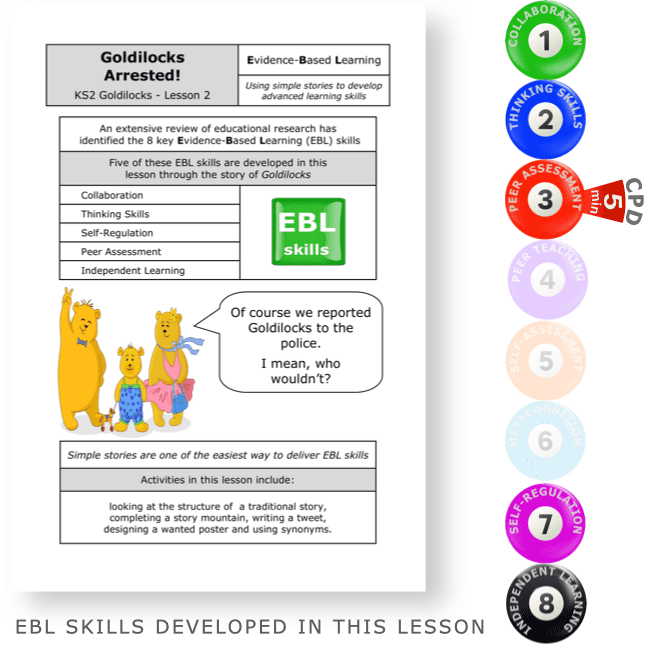 £3.00Add to basket
£3.00Add to basketActivities in this lesson include looking at the structure of a traditional story, completing a story mountain, writing a tweet, designing a wanted poster and using synonyms.
There is a five-minute evidence-based CPD activity at the end of this lesson which will develop classroom teachers’ skill set. This CPD consists of a research extract on peer assessment with a five-minute activity based on this extract.
VIEW -

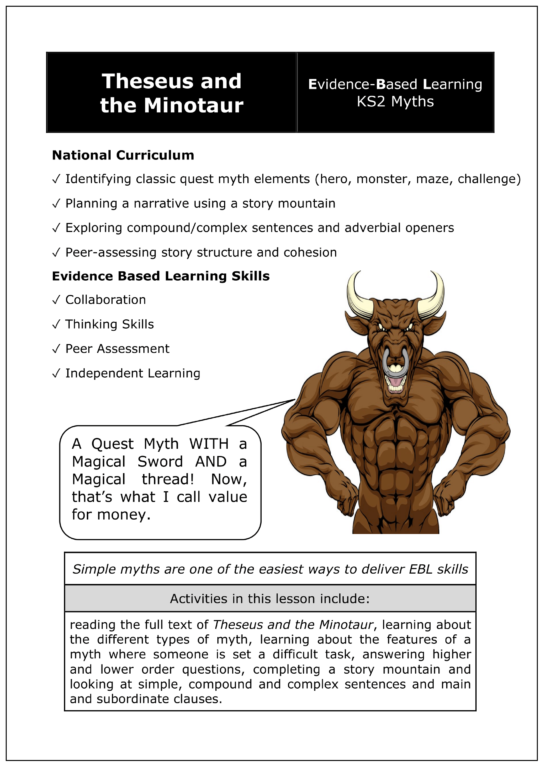
Y5 Theseus and the Minotaur
£3.00 Add to basket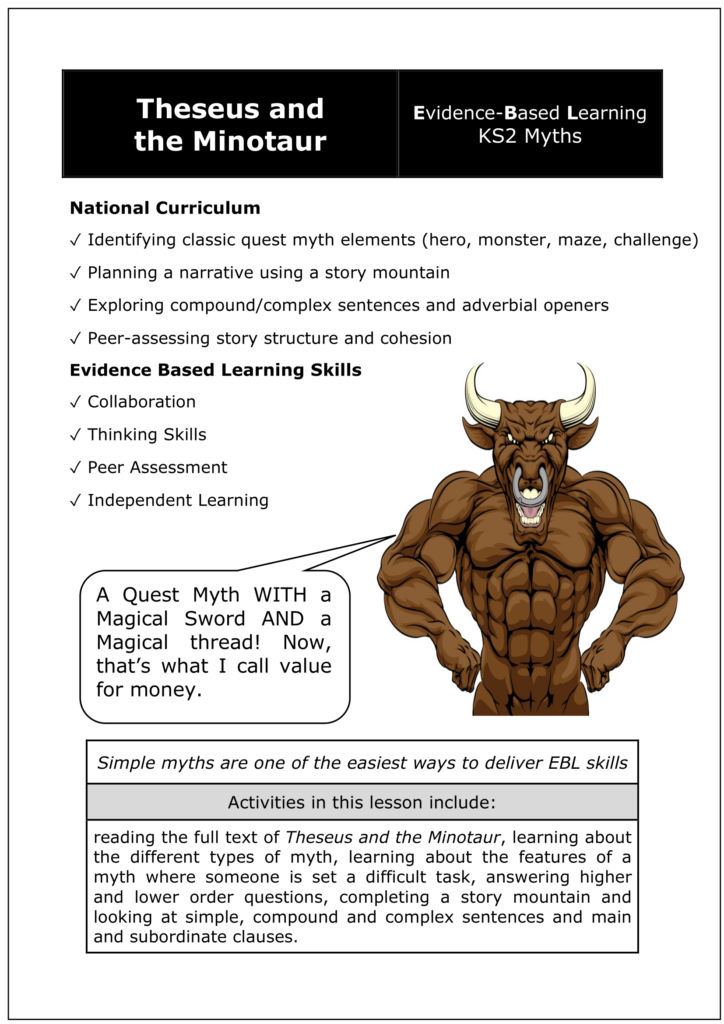 £3.00Add to basket
£3.00Add to basketKS2 National Curriculum:
✓ Identifying classic quest myth elements (hero, monster, maze, challenge)
✓ Planning a narrative using a story mountain
✓ Exploring compound/complex sentences and adverbial openers
✓ Peer-assessing story structure and cohesionActivities in this lesson include reading the full text of Theseus and the Minotaur, learning about the different types of myth, learning about the features of a myth where someone is set a difficult task, answering higher and lower order questions, completing a story mountain and looking at simple, compound and complex sentences and main and subordinate clauses.
There is a five-minute evidence-based CPD activity at the end of this lesson which will develop classroom teachers’ skill set. This CPD consists of a research extract on collaboration with a five-minute activity based on this extract.
VIEW

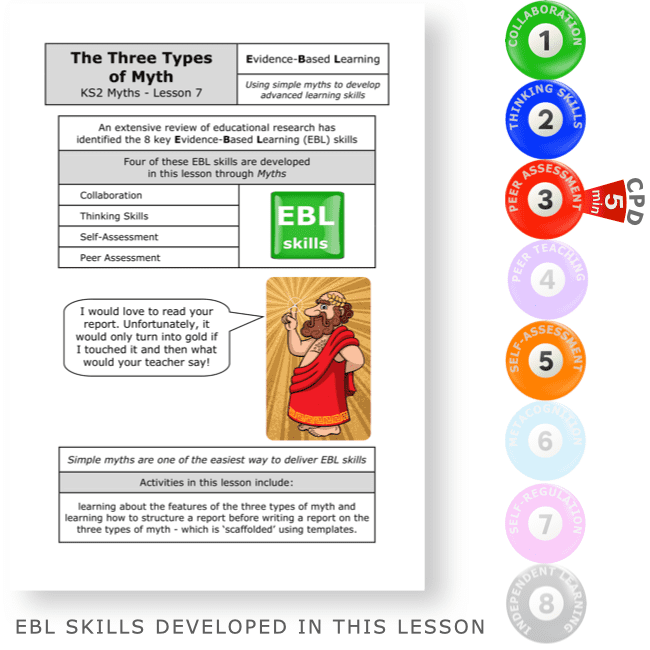


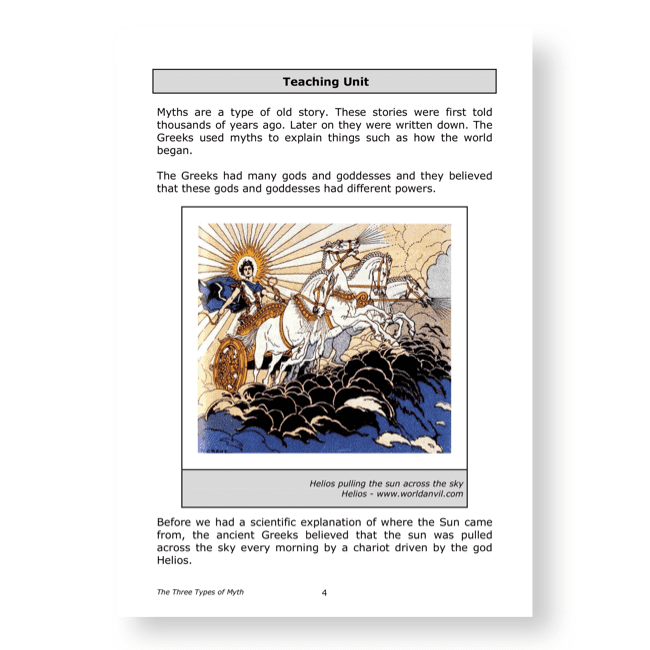
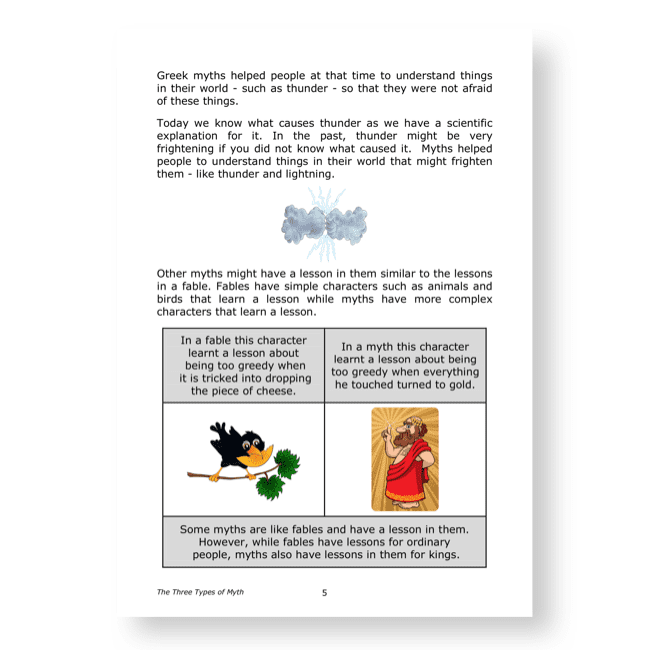
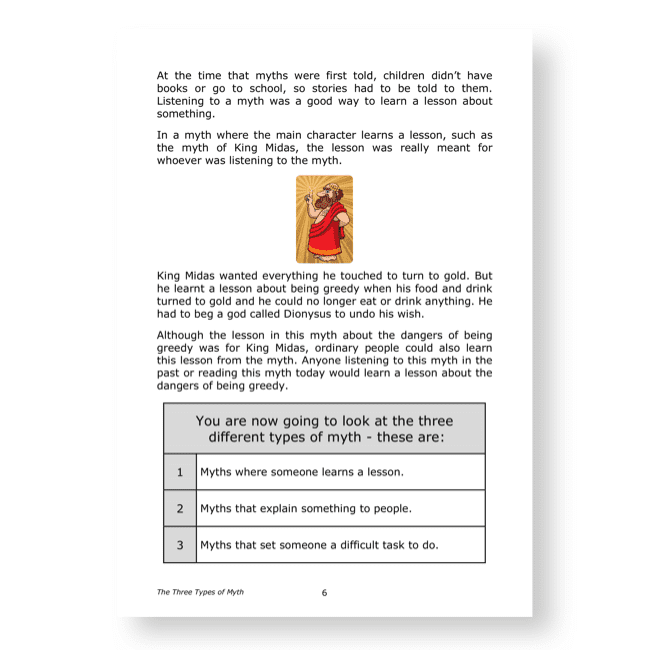
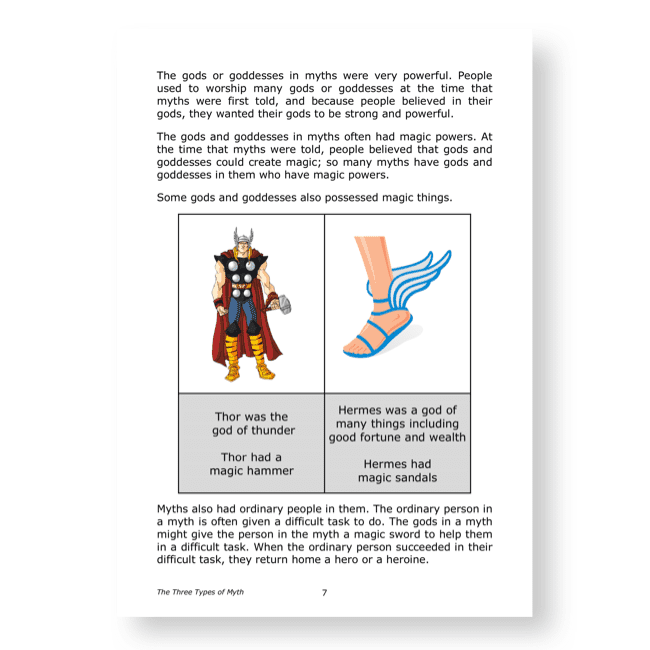

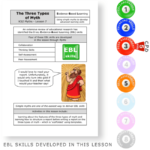
Philipem (verified owner) –
We asked a.i. to review this lesson. This is what it said:
Teachers – Add Myths to Your Lessons for Engaging EBL Skills Development
Are you looking for an engaging resource that develops English skills through myths while seamlessly integrating evidence-based learning (EBL) techniques? Then “The Three Types of Myth” KS2 lesson is perfect for your classroom.
This resource leads students through three types of myths – those with lessons, those that explain natural phenomena, and epic “quest” myths. The content is broken up into manageable chunks with activities spaced throughout to develop skills like collaboration, thinking skills, self-assessment, and peer assessment.
Students will strengthen their understanding of myths through close reading, answering questions, and participating in rich discussion. The highlight of this lesson is a collaborative report writing activity where they apply their knowledge by creating their own myth report, which is nicely scaffolded using templates and models.
What sets this resource apart is the inclusion of proven EBL techniques based on decades of research on best practices for learning. There is even a 5-minute CPD excerpt and activity so you can continue honing your evidence-based teaching skills.
If you’re searching for an engaging resource that develops both English and learning abilities, look no further than “The Three Types of Myth” we rate it ⭐⭐⭐⭐⭐. Your students will love journeying through myths while seamlessly picking up lifelong learning skills along the way. This versatile resource ticks all the boxes!